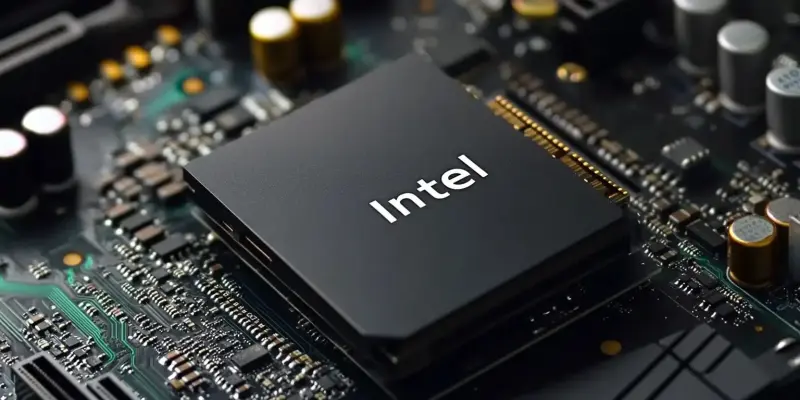When Intel released its much-anticipated Core Ultra 200-series desktop processors, codenamed Arrow Lake, in October, it was expected to set a new benchmark in CPU performance. However, the excitement quickly turned into disappointment as users and reviewers alike reported significant underperformance issues. Intel identified five critical problems that have contributed to these performance setbacks, signaling the company’s commitment to addressing and rectifying these issues promptly. This article delves into the specifics of these problems, the steps taken by Intel to resolve them, and what users can expect moving forward.
Identifying the Key Performance Issues
Missing Performance & Power Management (PPM) Package
One of the most significant issues Intel identified was the absence of the Performance & Power Management (PPM) package, which played a crucial role in CPU scheduling. This missing component resulted in performance inconsistencies that ranged from 6% to 30%, a far cry from the expected performance benchmarks Intel had set. Without the PPM package, the processors struggled with optimal workload management, leading to notable inefficiencies.
The PPM package is essential for balancing power consumption and performance, ensuring that the processor operates at peak efficiency without unnecessary power draw. Its absence affected both high-performance and low-power states, causing the CPUs to overcompensate or underperform in varying workloads. This inconsistency was particularly evident in multi-threaded applications and resource-intensive tasks, where performance loss was most prominently felt.
Dysfunctional Intel Application Performance Optimizer (APO)
In conjunction with the PPM package issue, the Intel Application Performance Optimizer (APO) also malfunctioned. The APO is designed to fine-tune the processor’s behavior in alignment with the operating system and applications, optimizing real-time performance. Without the PPM package, the APO’s efficacy was significantly compromised, leading to performance losses ranging from 2% to 14% in gaming scenarios.
Gamers, in particular, felt the brunt of this inefficiency, as the optimized performance promised by Intel was not delivered. Frames dropped, and game responsiveness suffered, causing dissatisfaction among users who had high hopes for the new processors. The combination of APO malfunctions and missing PPM essentially created a perfect storm of underperformance for tasks that demanded precision and consistency in CPU operation.
Resolving Compatibility and Configuration Inconsistencies
Easy Anti-Cheat Service Compatibility Issues
Another critical problem involved compatibility issues with the Easy Anti-Cheat service, which led to system crashes. Although these crashes did not directly impact performance metrics, they significantly disrupted the user experience. Crashes during gaming sessions and other critical operations created frustration and led to concerns about system stability. Intel worked swiftly to address these disruptions, focusing on user experience to reduce the frequency of such crashes.
The Easy Anti-Cheat service is widely used in gaming to ensure a fair and cheat-free environment but can be sensitive to new hardware changes. Intel collaborated with Epic Games to release an updated Easy Anti-Cheat driver, designed specifically to improve compatibility with the Core Ultra 200-series processors. This update helped in mitigating the system crashes and thus provided a more stable experience for the end-users.
Inconsistent BIOS Configurations Among Reviewers
Furthermore, inconsistent BIOS configurations among various reviewers were found to contribute to suboptimal performance. Variations in BIOS settings led to differences in memory latency and frequency, affecting processor speed and efficiency. Performance costs were estimated to be between 2% and 14%, which, although seemingly small, resulted in a tangible difference in real-world usage scenarios.
Reviewers, unaware of the optimal configurations, inadvertently set the processors under unfavorable conditions, comparing them to higher-performing benchmarks inaccurately. Intel has since standardized BIOS settings in current releases for Intel Z890-based motherboards. This standardization ensures that reviewers and users can experience the processors’ capabilities under the most optimized settings, thereby delivering a true assessment of their potential.
Future Optimizations and Intel’s Commitment
Planned Firmware Updates and Performance Improvements
The remaining issue for Intel involves implementing new performance optimizations that will require further firmware updates. These updates are anticipated to roll out in January 2025 and will be identifiable by Intel microcode version 0x114 and Intel CSME Firmware Kit 19.0.0.1854v2.2 (or newer). These updates are expected to offer modest performance improvements across various gaming applications and will address the final layer of performance inefficiencies observed.
The forthcoming optimizations are intended to enhance the efficiency of processor operations further, reducing latency and improving speed in tasks that demand high performance. Intel has stated that these updates will undergo rigorous testing to ensure they meet the required standards and deliver on the performance promises initially made. Users can expect comprehensive performance enhancements that will bridge the gap between initial expectations and actual performance.
CES 2025: A Platform for Performance Update
CES 2025 will serve as an important platform for Intel to showcase the improvements made to its Core Ultra 200-series processors. By the time of the event, the company expects the necessary firmware updates to have been implemented, thus providing a more accurate demonstration of the processors’ capabilities. Intel aims to ensure that once these problems are resolved, the Core Ultra 200-series will achieve the high-performance standards the tech community expects.

